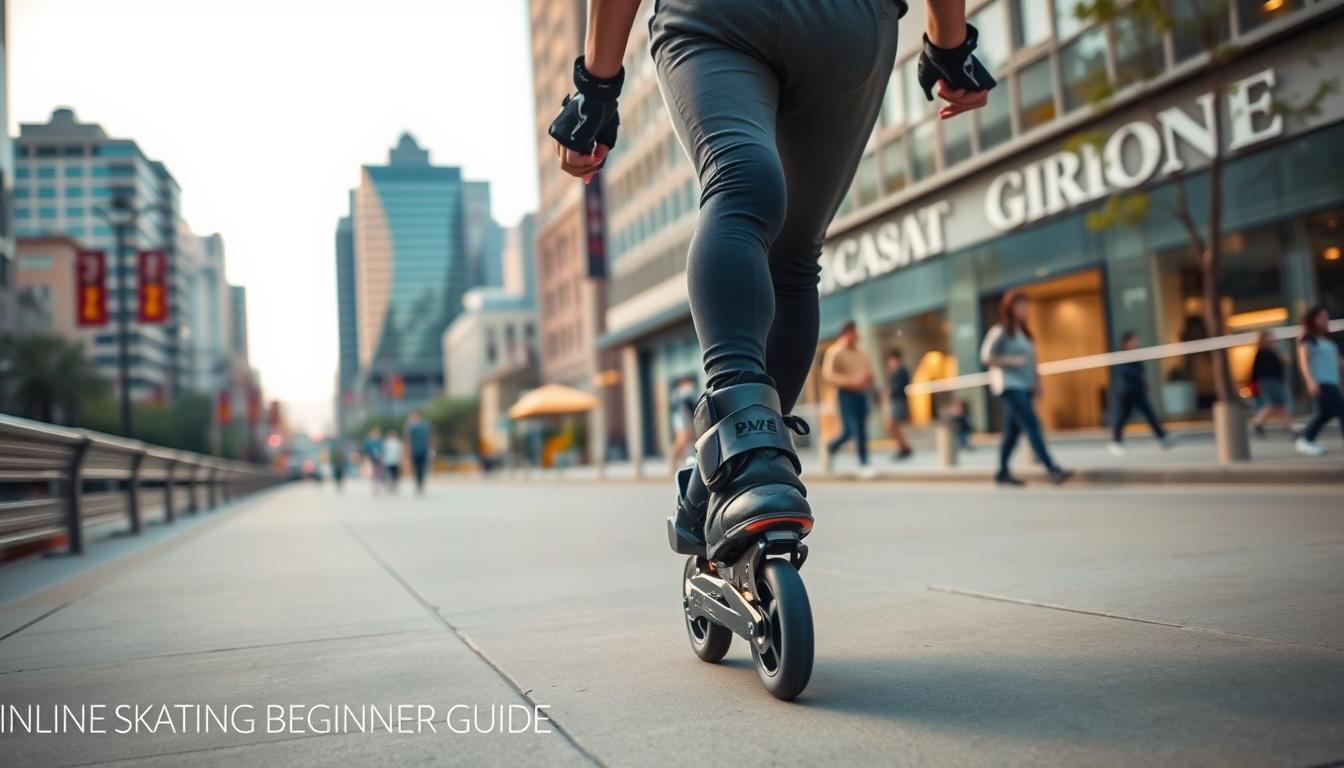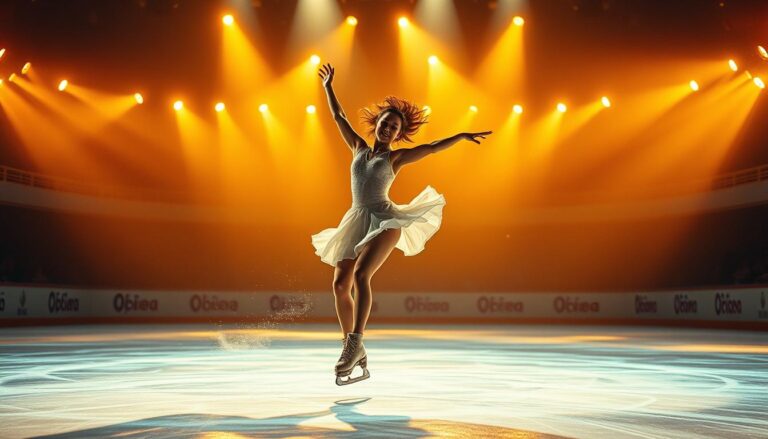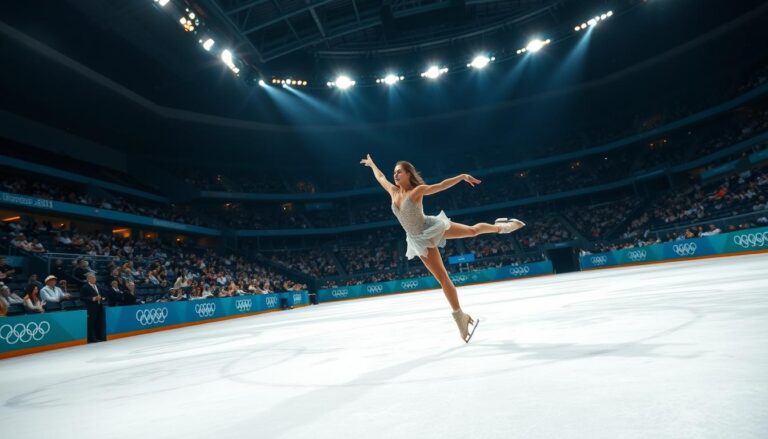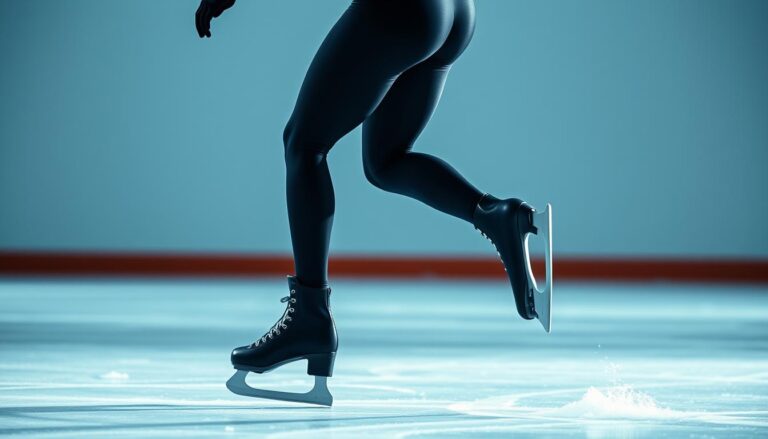Inline Skating 101: Everything You Need to Know
Imagine gliding smoothly down a sun-drenched pathway. Your wheels spin effortlessly beneath your feet. This is the magic of inline skating—a dynamic sport that blends fitness, fun, and exhilaration. It’s perfect for fitness enthusiasts and adventure seekers alike, turning urban landscapes into personal playgrounds.
So, what is inline skating? It’s a thrilling discipline where you explore urban and park environments with specialized wheeled footwear. Unlike traditional quad skates, inline skates have a single row of wheels. This allows for faster speeds and more precise movements. It welcomes everyone, from casual skaters to competitive racers.
This beginner’s guide to inline skating will give you all the essential knowledge. You’ll learn basic techniques, safety protocols, and the physical benefits of skating. Imagine burning up to 400 calories per hour while improving leg strength, balance, and feeling an extraordinary sense of freedom.
Inline skating is more than a sport—it’s a lifestyle. It connects you with vibrant urban communities and turns exercise into an exciting adventure. Whether you’re 15 or 50, athletic or just starting, these eight wheels can be your ticket to fitness, fun, and personal growth.
In this guide, you’ll learn the secrets of smooth riding and master essential techniques. We’ll cover everything from choosing your first pair of skates to advanced maneuvers. We’ll break it all down into easy-to-follow insights.
Ready to start an extraordinary journey? Let’s turn your curiosity into skill, one wheel rotation at a time!
What Is Inline Skating: Understanding the Basics
Inline skating is a fast-paced and fun sport that mixes speed, skill, and freedom. It’s a wheeled activity where people glide on a single line of wheels in a boot-like shoe. This motion combines ice skating and roller skating.
The history of inline skating is fascinating. It started as a way for ice hockey players to train during the off-season. Soon, it grew into a sport with its own disciplines and fans.
Evolution of Inline Skating
In the late 1980s, Minnesota hockey players Scott and Brennan Olson changed roller skates into a sleeker design. Their innovation changed how we move and train.
- 1980s: First commercial inline skates introduced
- 1990s: Explosion of popularity in urban areas
- 2000s: Specialized inline skating techniques emerge
- 2010s: Advanced performance and design improvements
Different Types of Inline Skating
Inline skating offers many styles for different interests and skill levels:
- Fitness Skating: Cardio-focused urban skating
- Speed Skating: High-performance racing
- Aggressive Skating: Trick-based urban sport
- Marathon Skating: Long-distance endurance challenges
Modern Inline Skating Culture
Today, inline skating is a lively mix of athletes, urban explorers, and fitness lovers. People skate on city streets and in skating parks. They keep pushing limits and inventing new techniques.
Essential Equipment for Inline Skating
Getting ready for inline skating means picking the right gear for both fun and safety. As a beginner, knowing what you need will make starting out easier and more enjoyable.

Beginners should focus on the main types of gear that keep you safe and help you learn.
Must-Have Inline Skating Gear
- Inline skates designed for beginners
- Protective safety gear
- Comfortable athletic clothing
- Maintenance tools
Detailed Equipment Breakdown
| Equipment Type | Recommended Features | Purpose |
|---|---|---|
| Inline Skates | Soft boot, ankle support, adjustable fit | Comfortable learning platform |
| Helmet | ASTM certified, proper fit | Head protection |
| Protective Pads | Knee, elbow, wrist guards | Joint and skin protection |
For beginners, getting good equipment is key. Your safety and fun depend on the right gear. Each piece is important for a great skating experience.
Beginner’s Equipment Considerations
- Start with entry-level inline skates
- Prioritize safety gear over style
- Ensure proper fit for all equipment
- Budget for quality protective gear
Inline skating for beginners is about feeling confident. The right gear lets you learn safely and have fun. Take your time to find the best equipment for your journey.
Choosing Your First Pair of Inline Skates
Choosing your first pair of inline skates can seem overwhelming. Beginners often find it hard to pick the right pair. This guide will help you make a choice that will help you skate better.
When you start inline skating, the right gear is key. Your first pair should be comfortable, perform well, and not break the bank.
Understanding Skate Components
Inline skates have important parts that affect how you skate:
- Wheels: Control your speed and how easy it is to turn
- Bearings: Make your ride smooth
- Frame: Keeps you stable and supported
- Boot: Makes sure you’re comfortable and fits right
Size and Fit Guidelines
Finding the right size is key for beginners. Here’s how to do it:
- Measure your foot carefully
- Try on skates with thin socks
- They should fit snugly but not too tight
- Make sure your heel fits well and there’s enough room for your toes
Price Range Considerations
| Price Range | Quality Level | Recommended For |
|---|---|---|
| $50-$100 | Entry-level | Complete Beginners |
| $100-$200 | Intermediate | Regular Recreational Skaters |
| $200-$300 | Advanced | Serious Skaters |
Investing in good inline skates can really help you learn. Start with a pair that’s comfy, supportive, and fits your budget and skill level.
Safety Gear and Protective Equipment

Learning to inline skate starts with safety. Protective gear is not just extra – it’s your defense against injuries. For newbies, the right safety gear makes skating less scary and more fun.
The key safety gear for inline skating includes:
- Helmet: Your most critical piece of safety equipment
- Wrist guards to prevent hand and arm injuries
- Knee pads for protecting joints during falls
- Elbow pads for additional protection
When picking safety gear, look for a good fit and quality. A helmet should sit level on your head, covering your forehead. Wrist guards and knee pads should fit snugly but not too tight, allowing you to move freely.
Experts say wearing a full protective set is best. Even pros wear safety gear because accidents can happen to anyone. Think of these layers as your safety net while you learn to skate.
| Safety Gear Item | Protection Level | Recommended For |
|---|---|---|
| Helmet | High | All Skill Levels |
| Wrist Guards | Medium | Beginners |
| Knee Pads | Medium | Learning Stages |
Plan to spend $50-$150 for a full set of protective gear. Quality gear is an investment in your safety and skating fun. Stay safe, feel confident, and enjoy inline skating!
Getting Started: Basic Stance and Balance
Learning to inline skate starts with mastering stance and balance. You’ll go from a nervous beginner to a confident skater. This journey builds a solid foundation.
Developing a comfortable and stable body position is key. It allows for smooth movement and control. The right stance opens the door to enjoying this exciting sport.
Proper Body Positioning
Your body positioning is vital when learning to inline skate. Follow these guidelines:
- Keep knees slightly bent for better shock absorption
- Maintain an athletic stance with feet shoulder-width apart
- Lean forward slightly to create a natural balance point
- Keep your back straight but relaxed
Weight Distribution Techniques
Effective weight distribution is key in inline skating. Beginners should focus on:
- Centering weight over the middle of your skates
- Practicing weight transfer between legs during movement
- Using your core muscles to maintain stability
Common Beginner Mistakes
Avoid these typical errors when learning inline skating:
- Stiff posture: Tension prevents smooth movement
- Looking down: Always keep your gaze forward
- Incorrect foot placement: Maintain proper alignment
By practicing these basic techniques, you’ll gain confidence. You’ll be ready for more advanced skills. Remember, every expert skater started where you are now.
Fundamental Skating Techniques
Learning to inline skate takes patience and practice. Your journey starts with understanding key movement principles. These principles help beginners become confident skaters.
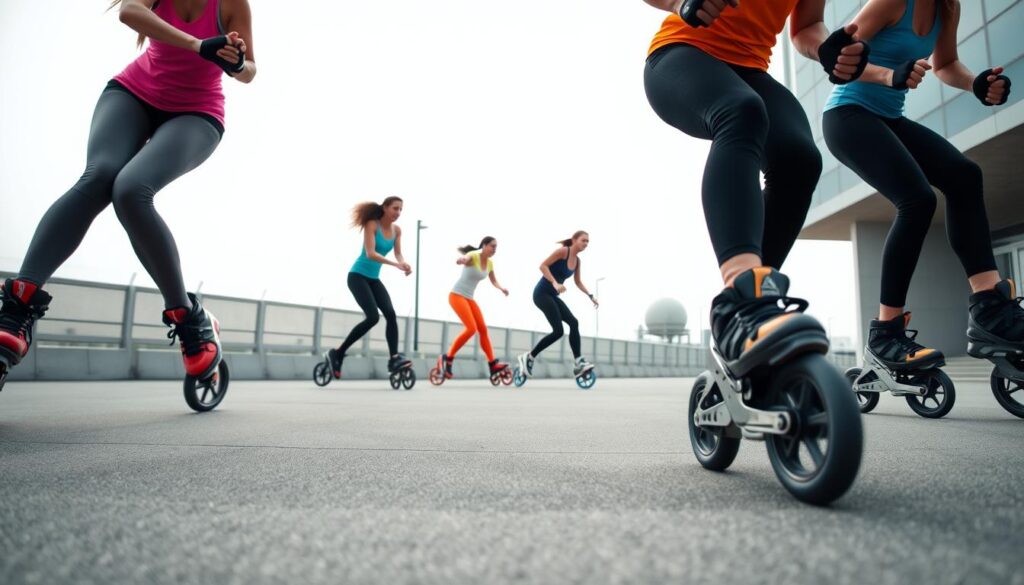
The base of inline skating is a solid skating stance. Your stance affects your stability and control. Keep your knees bent, weight centered, and upper body relaxed for better control.
- Maintain a low center of gravity
- Keep feet shoulder-width apart
- Distribute weight evenly
Basic inline skating includes gliding, pushing, and turning. Each skill needs specific body movements. These improve with regular practice.
| Technique | Key Focus | Skill Level |
|---|---|---|
| Forward Stride | Weight transfer and smooth propulsion | Beginner |
| Crossover Turn | Navigating curves with increased speed | Intermediate |
| Edge Control | Precise directional changes | Advanced |
Inline skating techniques grow from simple to complex. Start on flat, smooth surfaces. Focus on muscle memory and gradually get more comfortable with each skill.
- Practice regular skating motions
- Learn weight shift principles
- Develop smooth, controlled movements
Your success in inline skating comes from consistent practice and proper technique. Be willing to challenge yourself step by step. Every expert started where you are now, mastering the basics.
Mastering Stopping Methods
Learning to stop is key in mastering inline skating. Every skater needs reliable stopping techniques to control speed and stay safe. Whether you’re new or want to get better, knowing different stopping methods boosts your confidence.
Stopping is more than just avoiding accidents. It’s about controlling your speed and enjoying your skate. The right technique can make a big difference between a smooth ride and a fall.
Heel Brake Technique
The heel brake is great for beginners. Here’s how to use it:
- Shift your weight to your dominant leg
- Extend the other leg forward
- Gradually press the heel brake pad against the ground
- Apply steady pressure to slow down
T-Stop Method
This method is stylish and gives great control:
- Glide on your dominant leg
- Drag the other leg perpendicular behind you
- Apply friction to reduce speed
- Keep your body balanced and centered
Advanced Stopping Techniques
For those ready to improve their skills:
| Technique | Difficulty Level | Best Used For |
|---|---|---|
| Power Slide | Advanced | Quick, sharp stops |
| Hockey Stop | Expert | Immediate stopping at high speeds |
Pro tip: Practice these techniques in a safe, open area with proper protective gear before attempting them at higher speeds.
Building Confidence: Progressive Learning Steps
Mastering inline skating needs a smart plan to build confidence. As a beginner, you start by knowing that progress comes from patient practice. This guide will help you learn skills step by step.
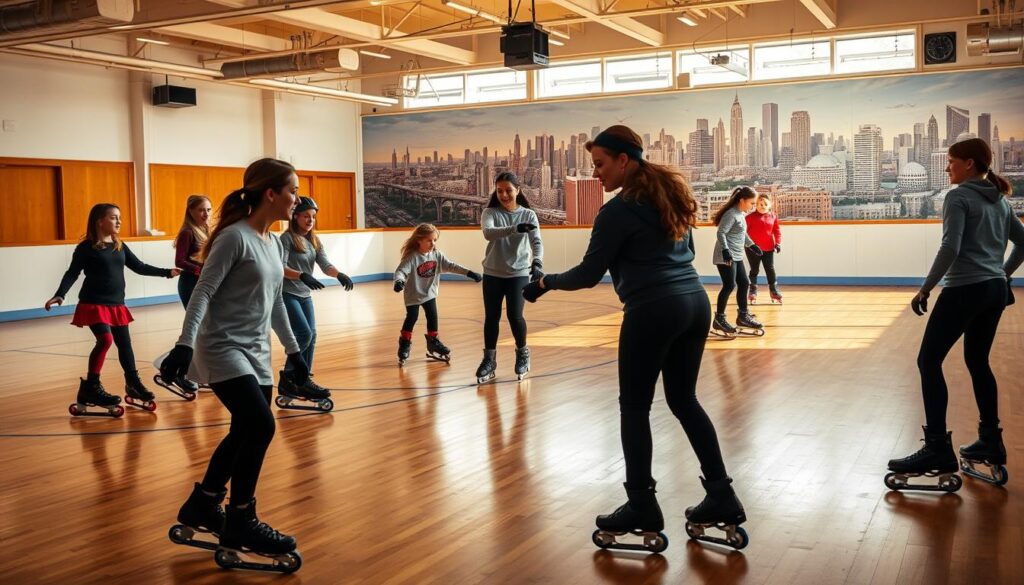
- Start with off-skate balance exercises
- Practice stationary drills before moving
- Set realistic, incremental goals
- Use mental visualization techniques
Mental prep is key in your skating growth. Beginners often face fear, but breaking skills into small steps can change your learning.
| Skill Level | Focus Area | Recommended Practice |
|---|---|---|
| Beginner | Balance and Stance | 30 minutes daily off-skates |
| Intermediate | Basic Movement | Stationary and slow-roll drills |
| Advanced Beginner | Directional Control | Controlled forward movement |
Remember, every professional skater started exactly where you are now. Enjoy the learning, celebrate small wins, and be patient with yourself. Your confidence will grow as you keep practicing.
Tracking your progress keeps you motivated. Try keeping a skating journal to note your improvements and look back on your journey to becoming a skilled inline skater.
Common Challenges and Solutions for Beginners
Inline skating can be tough for newbies, but the right tips can help. You’ll face hurdles, but knowing how to deal with them is key. This guide will help you on your journey.
Learning to inline skate means beating mental and physical barriers. It’s all about tackling challenges wisely and staying positive.
Conquering Your Skating Fears
Fear is a big hurdle for new skaters. Many worry about falling or losing control. Here’s how to overcome it:
- Start in a safe, flat area
- Wear full protective gear
- Practice falling safely
- Get better by learning new skills slowly
Addressing Balance Challenges
Balance is a big issue for inline skaters. Core strength and proper technique can really help:
| Balance Challenge | Solution |
|---|---|
| Wobbling | Practice standing on one foot, strengthen leg muscles |
| Ankle Instability | Use supportive skates, do ankle strengthening exercises |
| Body Alignment | Learn proper skating stance, keep knees slightly bent |
Managing Speed Control
Speed control is key for beginners. Learning to stop and understanding momentum makes you feel safer:
- Master the heel brake technique
- Practice T-stop method
- Learn weight distribution for smooth deceleration
- Start on gentle slopes to understand speed management
Every challenge is a chance to get better at inline skating. Be patient, keep practicing, and enjoy the journey.
Inline Skating for Fitness and Health Benefits
Inline skating turns exercise into an exciting adventure with amazing health perks. It’s more than just a fun activity. It’s a full-body workout that boosts your heart and strengthens muscles at the same time.
Skating offers more than just fun. It gives you a workout that works many muscles at once. Your legs, core, and upper body get a great workout as you move smoothly.
- Burn up to 600 calories per hour
- Improve cardiovascular endurance
- Enhance balance and coordination
- Low-impact exercise for joint health
- Build leg muscle strength
Inline skating also boosts your mental health. The mix of fresh air, movement, and rhythm can lower stress and lift your mood. Skaters often feel more energized and connected to nature.
Even pros and fitness experts see inline skating as a top choice for cross-training. It’s a great mix of cardio and strength, perfect for those looking for a fun workout.
| Fitness Metric | Inline Skating Performance |
|---|---|
| Calories Burned | 450-600 per hour |
| Muscle Engagement | Legs, Core, Upper Body |
| Impact Level | Low |
Ready to start your fitness journey? Inline skating is a fun, effective way to improve your health with every step.
Maintaining Your Inline Skates
Keeping your inline skates in good shape is key to smooth wheels and longer life. Just like cars need tune-ups, skates need regular care to perform well.
Learning how to take care of your skates is the first step. Regular maintenance boosts performance and saves money on replacements.
Cleaning and Storage Essentials
Always clean your skates after skating. Here’s a simple routine:
- Wipe the outside with a soft, damp cloth
- Clear dirt from wheel bearings
- Dry them completely before storing
- Keep them in a cool, dry spot, away from sunlight
Wheel Rotation Strategy
Uneven wear can affect your skating. Use this rotation plan for best maintenance:
| Skating Frequency | Rotation Interval |
|---|---|
| Casual (1-2 times/week) | Every 2-3 months |
| Regular (3-4 times/week) | Every 4-6 weeks |
| Competitive/Professional | Every 2-3 weeks |
Bearing Care Techniques
Bearings are essential for your skates. Clean and lubricate them often for smooth rolling and less wear:
- Take out the bearings carefully
- Use a bearing cleaner to clean them
- Apply light machine oil or bearing lubricant
- Put the bearings back in correctly
By using these tips, your skates will stay in great shape. This means a smooth and fun skating experience every time.
Advanced Skills and Tricks
To improve your inline skating, you need to be dedicated and willing to try new things. Advanced techniques turn skating into a beautiful art of movement and cool tricks.
Learning advanced inline skating takes a smart plan. Skaters who want to get better will find many exciting challenges. These tests your body and mind.
- Crossover techniques for smooth cornering
- Advanced jumping and spinning methods
- Complex transition movements
- Precision footwork and edge control
Experts say to break down hard techniques into easy steps. Start with basic moves and then try harder tricks.
| Skill Level | Recommended Tricks | Difficulty Rating |
|---|---|---|
| Intermediate | Two-foot spin | Medium |
| Advanced | Single-leg spin | High |
| Expert | Multiple rotation jumps | Very High |
Remember, safety is key when trying new tricks. Always wear protective gear and practice in safe places. Get better slowly, building confidence with each new skill.
Regular practice helps you remember moves. With time, hard techniques become easy and show off your skills.
Best Places to Practice and Skate
Finding the right place to skate can really help you learn. As a beginner, you’ll want places that are safe and fun. They should match your skill level too.
Every skating spot is different. They offer unique challenges and ways to improve your skills.
Indoor Skating Venues
Indoor places are great for beginners. They have smooth surfaces and are controlled. Here are some top spots:
- Roller rinks with smooth surfaces
- Community centers with dedicated skating areas
- Indoor sports complexes
- Gymnasium floors during off-peak hours
Outdoor Skating Locations
Outdoor spots are exciting for learning. They have different terrains to try:
- Paved park trails
- Dedicated bike paths
- Smooth pedestrian walkways
- Closed street circuits
Skating Communities
Skating with others can make learning more fun. Look for:
- Local inline skating clubs
- Online forums and social media groups
- Meetup skating events
- Community recreation center programs
Pro tip: Always check your skating spot before you go. Look at the surface and any obstacles to stay safe.
Conclusion
Inline skating is more than just a fun activity. It’s a way to get fit, grow as a person, and connect with others. Learning to inline skate means more than just mastering moves. It’s about living a lifestyle that’s both challenging and joyful.
This sport does more than just keep you moving. It helps you get stronger, improves your heart health, and boosts your balance and coordination. Every time you skate, you get better at this exciting skill.
Keep skating and remember, you’ll get better with time and a positive attitude. Just like pro skaters and fans around the world, you’re starting your journey. It will be filled with personal achievements, challenges, and moments of pure joy.
Take every chance to learn, stay safe, and join local skating groups. Your journey in inline skating is just starting. There’s a world of fun, new skills, and personal growth waiting for you. Roll forward with confidence and excitement!
